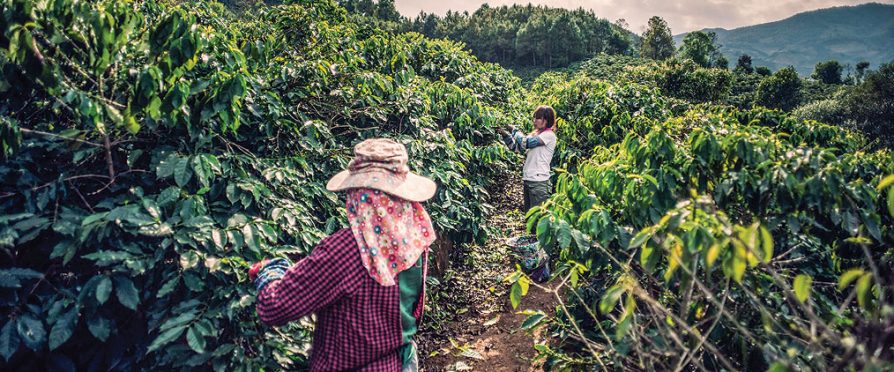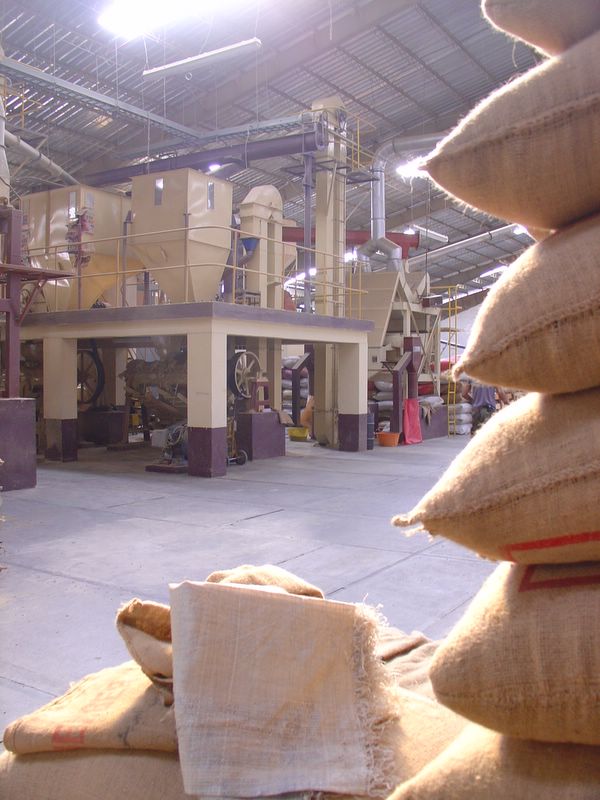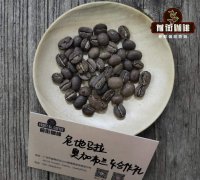Traditional Kenyan coffee bean processing methods flavor Kenyan Kiambu coffee growers team story
Grower groups such as Ngewa-Komothai help quality-conscious small owners maintain quality and traceability standards while entering the international market.

Coffee grade:
Kiambu full wash
Farm / cooperative / station:
All kinds of small estates
Variety:
Batian, Ruiru 11 、 SL28 、 SL34
Processing:
Full wash
Height:
1600 to 2000 meters above sea level
Owner:
All kinds of small owners
Subregions / towns:
Komotai
Region:
Central Kenya Kiambu
Farm size:
An average of 5 to 50 hectares
Bag size:
30kg vacuum packing
Harvest month:
Central Kenya: may to July (precocious) | October to December (late ripening)
The land is planted on several small estates in Komothai, Kiambu. The landowners are working together in a group of growers called Ngewa-Komothai Farmers. The team is made up of about 30 small farmers who process their own harvests and then mix their batches together to make dry parchment in Kahawa Bora Millers, Sika, Kenya.
This practice of mixing plots from a small estate is the invention of Sucafina Kenya (Kenyacof/Kahawa Bora). Especially before the purchase of Kahawa Bora, our dry grinder is equipped with dry grinding micro-batches, and many quality-conscious small owners do not produce enough parchment to meet the minimum size requirements of the dry mill. This usually means that small landowners end up selling their parchment to agents who mix their coffee with many other plots and often lose traceability. To help small landowners achieve a minimum, maintain traceability, and ensure that mixed plots maintain the quality of each contribution, Sucafina Kenya helps promote grower groups that connect small landowners with others nearby and maintain similar quality standards and profiles.
These grower groups are more mobile than cooperatives. Although the exact number of growers involved varies from year to year, the principles remain the same. Grower groups help small ranchers get more traceable dry grinding and marketing solutions, which usually means better quality and higher prices for their coffee.
Located at the foot of the Gatamaiyo Forest Reserve, the area is famous for its tea farmers and is home to the Kenya Coffee Research Foundation. Kiambu County and Ngewa-Komothai region are also known for their dairy production and are the largest dairy production counties in Kenya. Many growers stick to organic fertilization, using only cow dung instead of agrochemicals on their coffee trees.
Each small estate manages its own harvest and processing. In the case of these producer groups, the processing scale is smaller than that of traditional large factories.
The producers of the Ngewa-Komothai Group follow the traditional Kenyan coffee processing method.
After harvest, cherries are floated to remove immature cherries and visual inspection is performed to remove any overripe or damaged cherries. The coffee is beaten and fermented for an average of 24 hours. Wash the parchment with clean water to remove any residual mucus, then place it on a raised table to dry. Depending on the weather conditions, parchment takes about 14 days to dry. Manufacturers are instructed to build their own elevated tables and are supported by a team of Sucafina Kenya (Kenyan Korf / Kahawabora) field officials in all steps of the production process.

Farmers transport their dry parchment to a Kahawa Bora Millers dry mill in Sika, Kenya. Here, the factory will conduct the first quality analysis to determine the quality. The dry grinding process cleans and classifies the parchment and shell, and finally divides the batches into different screen sizes.
Class C products from Kenya (item number 14 + 15) are full of untapped potential. Each An and AB batch purchased has a Class C batch as its counterpart (which may be up to 17% of each "output" or crushed parchment batch). However, quality-oriented farmers like us are often unable to sell their C batches at value-added prices, even though they may get high-quality cups. We are tired of missing out on high-quality coffee at reasonable prices.
Kiambu is just outside Nairobi, the capital of Kenya, but it is still famous for its agriculture-especially coffee and tea. The county is also home to the Kenya Coffee Research Foundation.
Kiambu County is also known for its dairy production and is the largest dairy production county in Kenya. Many growers here insist on organic fertilization, using only cow dung instead of agrochemicals on their coffee trees.
Farmers in Kiambu face low yields due to diseases and insect pests and have to pay high prices for inputs. In recent years, because of the region's border with Nairobi, many people have felt the pressure and sold their land to property developers. Support from partners such as Kahawa Bora to help farmers build long-term profitability can make a difference.
Kahawa Bora recognizes the importance of establishing support relationships with coffee farmers and roasters. The factory provides important services to the farmers and cooperatives they work with.
They provide key agricultural extension work to help farmers improve the health of their crops, increase productivity and ensure the best possible quality. They also support innovation in small real estate.
Kahawa Bora also provides more extensive expertise in quality processing to customers, providing feedback and helping them understand processing methods and changing market needs.
Most small ranchers do not usually produce enough coffee to fill 50 bags of parchment beans, and factories usually handle the minimum amount of coffee. Before Kahawa Bora was established, factories and marketing agents had to mix smaller batches from multiple estates before bringing them to the factory. This means that coffee from small estates is usually anonymous, which may also limit payment for recognition or quality.
Before running our own factory, our sister companies solved this problem by mixing batches from about 4-8 producers from the same region-such as our Slopes of 8 coffee. It also allows producers to maintain the identity behind the coffee and allows them to collectively control price expectations. Kahawa Bora's micro-batch plan is another option that manufacturers can choose along this vein.
By buying Kahawa Bora Mills, it is now easier to maintain traceability from the individual farmers who planted the batch to the roaster. Thanks to the factory, small landowners can get higher quality products and associate their names with their coffee for consumers to see.
There are many benefits for farmers to associate their names and life stories with their coffee and then be bought and seen by end users. This means that they can establish long-term relationships with bakers and increase the value of their products. For roasters, linking farmers' stories to the coffee they grow can stimulate customers' stronger interest in specific coffee, added value and needs, and help fund successful long-term relationships with farmers.
Grower groups such as Ngewa-Komothai help quality-conscious small owners maintain quality and traceability standards while entering the international market.
Important Notice :
前街咖啡 FrontStreet Coffee has moved to new addredd:
FrontStreet Coffee Address: 315,Donghua East Road,GuangZhou
Tel:020 38364473
- Prev

What are the trading modes of coffee beans? How to do a fair trade auction of raw coffee beans? Direct trade?
James Hoffman writes in his book that coffee trade is mainly divided into four modes: partnership coffee, direct trade, fair trading model, and auction coffee. What are the specific differences between these four modes of coffee trading? in fact, you can know through their names, but about the specific details of these patterns, Qianjie is here to learn about them.
- Next

Flavor characteristics of bourbon coffee beans with Vivetna fruit water in Guatemala eight major coffee producing areas in Guatemala
In most cases Guatemala has a well-functioning network of producers. Although infrastructure is still generally lacking (there is no national post office), coffee farmers are surprisingly well connected. This is largely due to the efforts of Anacaf (Asociacin Nacional del Caf), a trade group that supports coffee growers. Anacaf builds the brand of eight planting areas: aka
Related
- Detailed explanation of Jadeite planting Land in Panamanian Jadeite Manor introduction to the grading system of Jadeite competitive bidding, Red bid, Green bid and Rose Summer
- Story of Coffee planting in Brenka region of Costa Rica Stonehenge Manor anaerobic heavy honey treatment of flavor mouth
- What's on the barrel of Blue Mountain Coffee beans?
- Can American coffee also pull flowers? How to use hot American style to pull out a good-looking pattern?
- Can you make a cold extract with coffee beans? What is the right proportion for cold-extracted coffee formula?
- Indonesian PWN Gold Mandrine Coffee Origin Features Flavor How to Chong? Mandolin coffee is American.
- A brief introduction to the flavor characteristics of Brazilian yellow bourbon coffee beans
- What is the effect of different water quality on the flavor of cold-extracted coffee? What kind of water is best for brewing coffee?
- Why do you think of Rose Summer whenever you mention Panamanian coffee?
- Introduction to the characteristics of authentic blue mountain coffee bean producing areas? What is the CIB Coffee Authority in Jamaica?

